We enjoyed our moving and emotional visit to the cemetery. We were able to honor the fallen last week.
The Cambridge American Cemetery, located in Madingley, just three miles west of Cambridge, England, is a poignant tribute to the American servicemen and women who lost their lives during World War II.
Spanning 30.5 acres, this serene and meticulously maintained site is one of nine American military cemeteries in Europe managed by the American Battle Monuments Commission (ABMC).
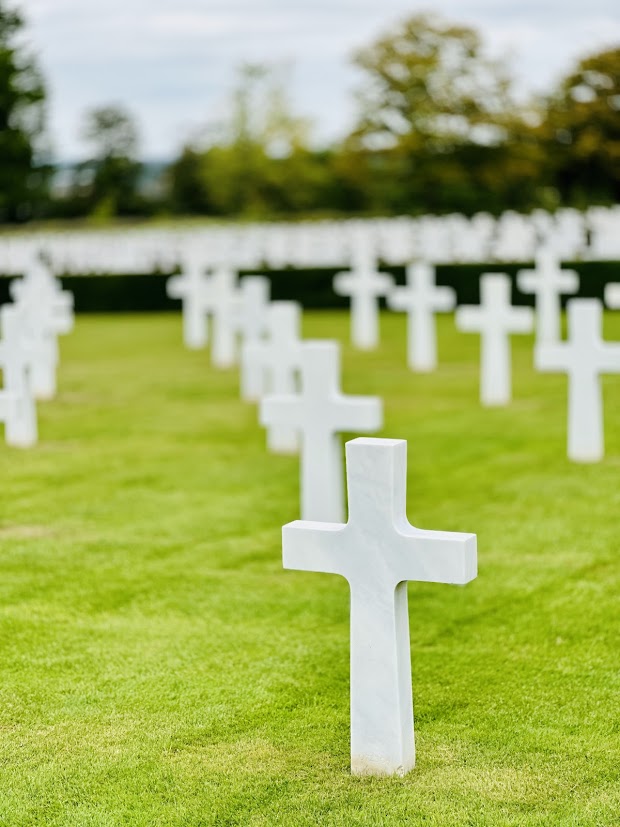
It stands as a solemn reminder of the sacrifices made by U.S.
forces, particularly those who perished in the Battle of the Atlantic, the strategic air bombardment of Europe, and related operations.
Established in 1943 and dedicated in 1956, the cemetery serves not only as a burial ground but also as a place of reflection, education, and remembrance for visitors from around the world. The Cambridge American Cemetery was established during a critical period of World War II, when the United States was deeply engaged in the European theater.
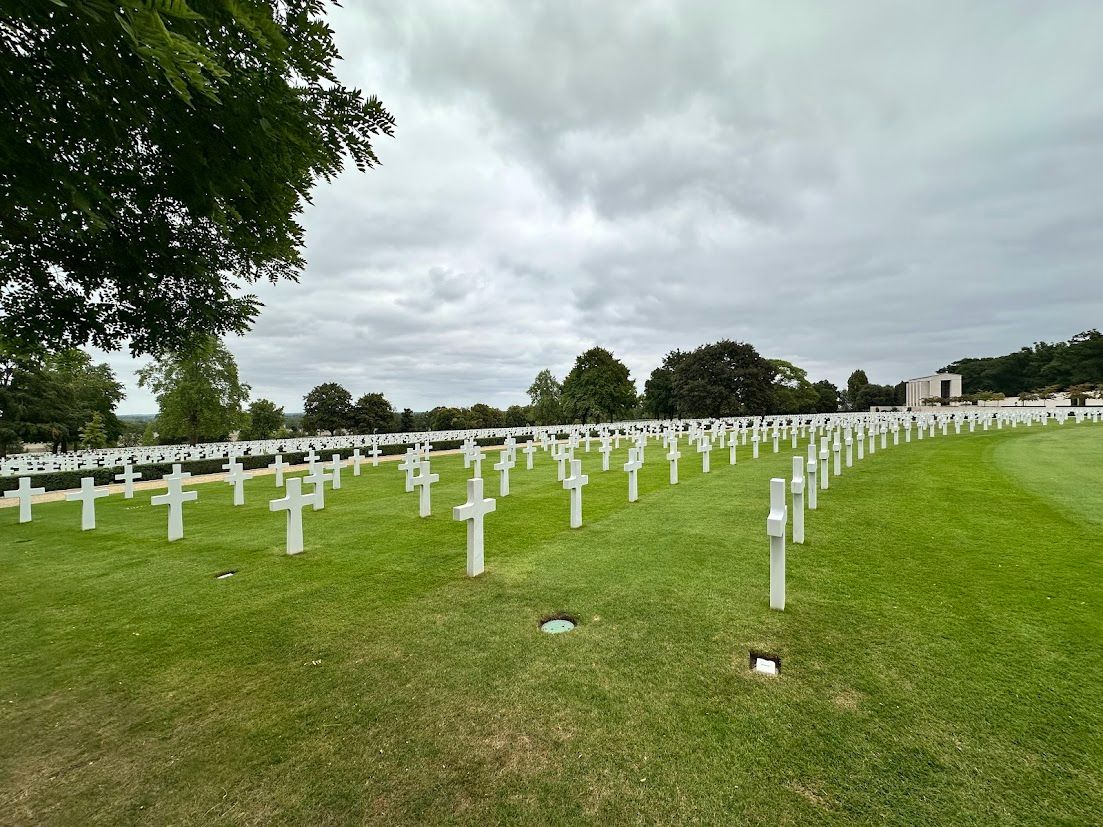
The site was donated by the University of Cambridge, reflecting the strong alliance between the United States and the United Kingdom.
The cemetery was initially used as a temporary burial ground in 1943, as American forces arrived in droves to support the war effort.
After the war, it was designated as a permanent resting place for 3,811 American service members, with an additional 5,127 names inscribed on the Wall of the Missing, honoring those whose remains were never recovered or identified.
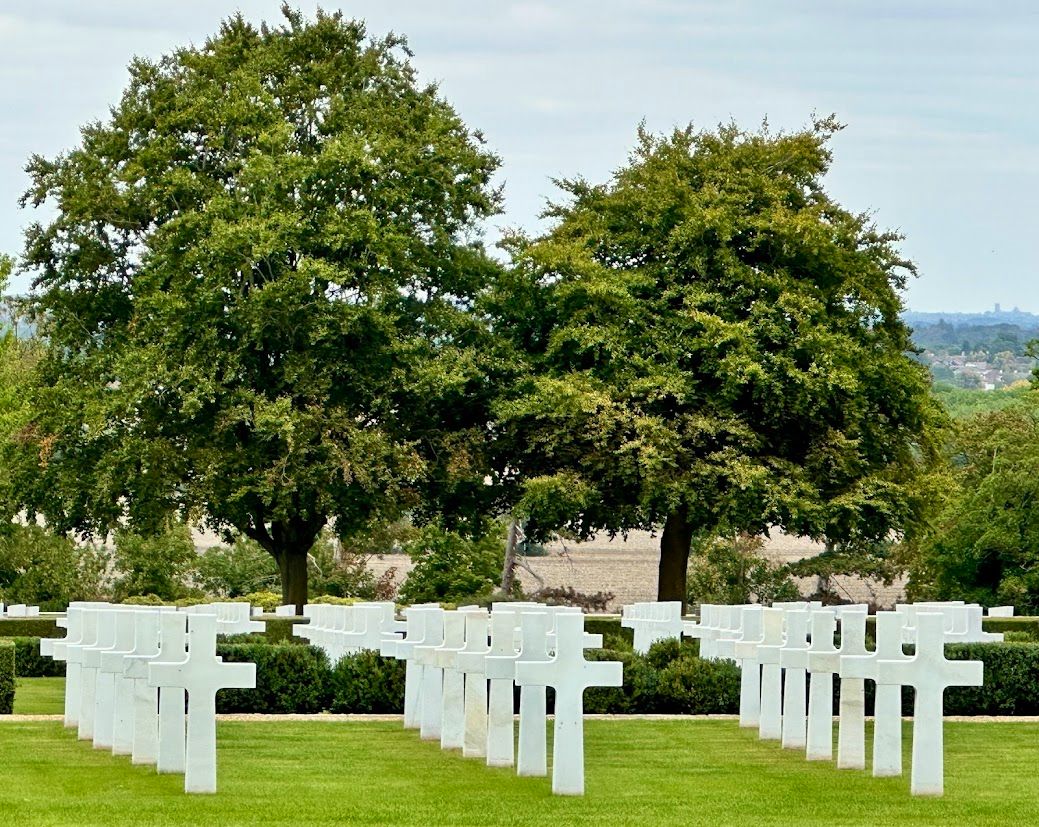
The cemetery’s primary focus is on those who died in the Battle of the Atlantic, a prolonged campaign to secure Allied shipping routes against German U-boat attacks, and the strategic bombing campaign against Nazi-occupied Europe.
Many of the fallen were members of the U.S. Army Air Forces, particularly the Eighth and Ninth Air Forces, who operated from airfields across East Anglia.
Others include Navy personnel, Coast Guard members, and those who died in training accidents or other war-related incidents in the region.

The cemetery encapsulates the immense cost of the war and the shared commitment of the Allies to defeat the Axis powers. Designed by the American architectural firm Perry, Shaw, Hepburn, and Dean, with landscape architecture by the Olmsted Brothers, the cemetery is a masterful blend of functionality, symbolism, and aesthetic beauty.
The layout is both practical and symbolic, guiding visitors through a narrative of sacrifice and victory.
The site is oriented to draw the eye toward the flagpole and the Memorial Chapel, creating a sense of reverence and purpose. Upon entering, visitors are greeted by a tree-lined mall leading to the flagpole, where the American flag flies proudly.
The mall is flanked by lush lawns and reflecting pools, which add to the tranquil atmosphere.
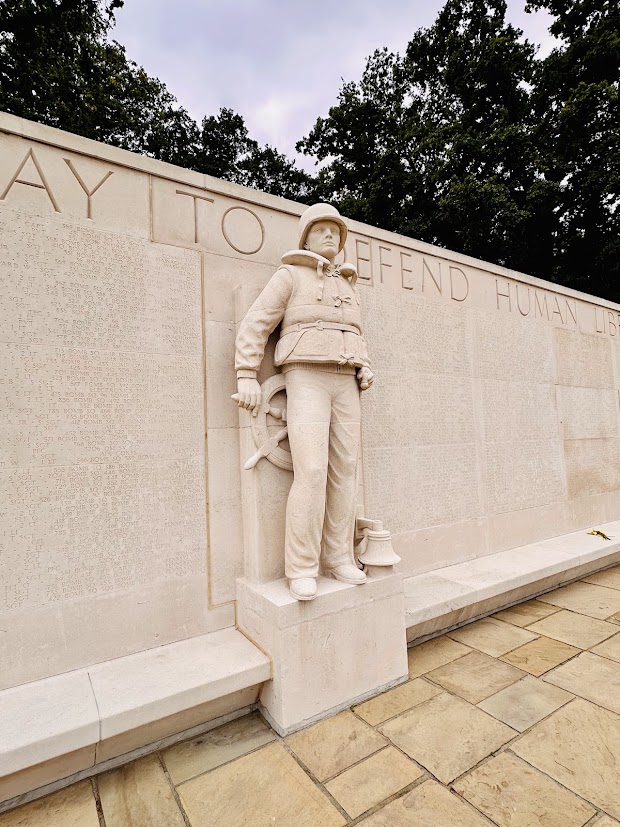
The graves are arranged in a fan-shaped pattern, with headstones aligned in gentle curves that evoke waves, perhaps a nod to the Battle of the Atlantic.
The headstones, made of white Italian Lasa marble, are primarily Latin crosses, with 30 Stars of David marking the graves of Jewish servicemen.
Each headstone is inscribed with the service member’s name, rank, unit, home state, and date of death, a stark reminder of the individuality of each sacrifice. The Wall of the Missing, a 74-foot-long limestone structure, is a focal point of the cemetery.
It bears the names of those whose bodies were never recovered, including those lost at sea or in the air.
The wall is adorned with four allegorical figures representing a soldier, sailor, airman, and coast guardsman, symbolizing the branches of service represented.
Above the names, an inscription reads: “To the glory of God and in honored memory of those who gave their lives to their country.” The wall is both a memorial and a testament to the unresolved grief of families who never received closure.
The Memorial Chapel, designed in a restrained classical style, is the spiritual heart of the cemetery.
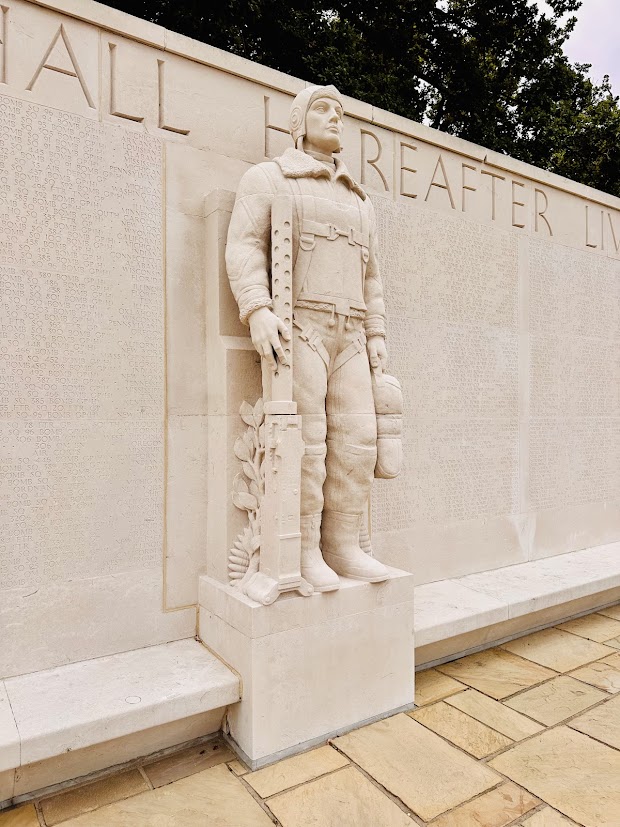
Its interior features a stunning mosaic by the American artist Francis Scott Bradford, depicting the Archangel Gabriel sounding a trumpet, symbolizing resurrection and victory.
The ceiling is adorned with images of aircraft, representing the air forces’ critical role, while a map on the wall illustrates the major campaigns in the European theater.
Stained-glass windows bear the seals of the U.S.
military branches and states, reinforcing the national unity of the war effort.
A simple altar and pews invite quiet contemplation.
Every element of the Cambridge American Cemetery is imbued with meaning.
The reflecting pools, for instance, mirror the sky, symbolizing the connection between the fallen and the heavens.
The Olmsted Brothers’ landscaping, with its manicured lawns, flowering trees, and seasonal blooms, creates a sense of peace and renewal, contrasting the violence of war.
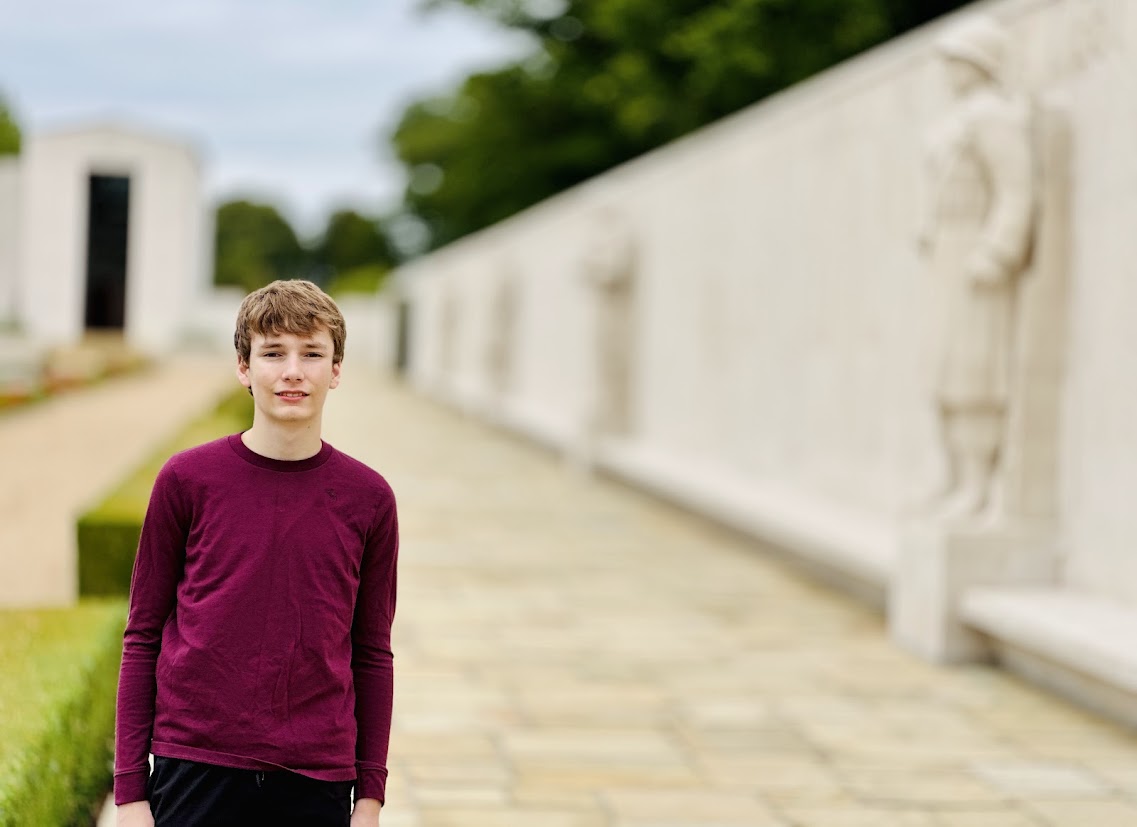
The cemetery’s location in the gently rolling countryside of Cambridgeshire, with views of the historic city of Cambridge, ties it to the broader Anglo-American partnership.
The visitor center, opened in 2014, enhances the educational mission of the cemetery.
It features exhibits on the air war, the Battle of the Atlantic, and personal stories of the fallen.
Artifacts, photographs, and interactive displays bring the history to life, ensuring that younger generations understand the scale of the sacrifice.
The center also provides resources for genealogical research, allowing families to trace the stories of their loved ones. The cemetery is more than a monument; it is a repository of individual stories.

Among the buried are members of the 91st Bomb Group, known as the “Memphis Belle” group, and other units that flew perilous missions over Germany.
The Wall of the Missing includes names like Joseph P. Kennedy Jr., the older brother of President John F. Kennedy, who died in a secret mission in 1944 when his explosive-laden aircraft detonated prematurely.
Another notable name is Glenn Miller, the famous bandleader, whose plane disappeared over the English Channel in 1944.The diversity of the fallen reflects the breadth of American society.
The headstones list home states from Maine to California, and the names include those of African American, Native American, and Hispanic servicemen, as well as women who served in auxiliary roles.
The cemetery also honors the contributions of the U.S. Merchant Marine, whose members faced staggering losses to keep supply lines open.
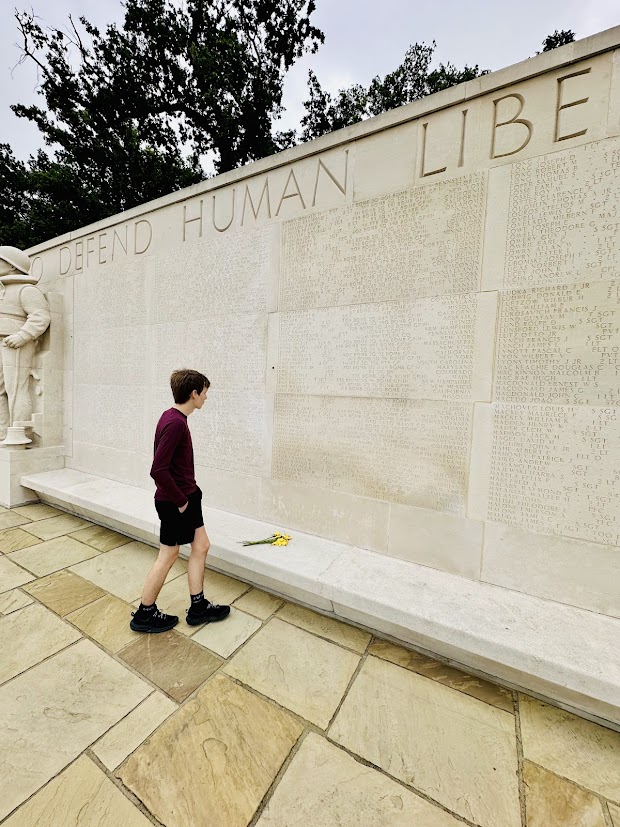
The Cambridge American Cemetery is open to the public daily, free of charge, and is easily accessible from Cambridge.
Guided tours, often led by knowledgeable ABMC staff, offer insights into the cemetery’s history and the stories of the fallen.

The visitor center provides a starting point for exploration, with maps and brochures available.
Special ceremonies, such as Memorial Day and Veterans Day services, draw crowds to honor the buried.
These events often include wreath-layings, speeches, and military flyovers, reinforcing the site’s role as a living memorial. The cemetery’s peaceful setting makes it a place for reflection, but it also serves as a bridge between nations.
British locals frequently visit, and school groups from the UK and beyond come to learn about the war.
The proximity to Cambridge University fosters a connection with academia, with students and scholars occasionally conducting research at the site. The Cambridge American Cemetery stands as a testament to the enduring alliance between the United States and the United Kingdom.
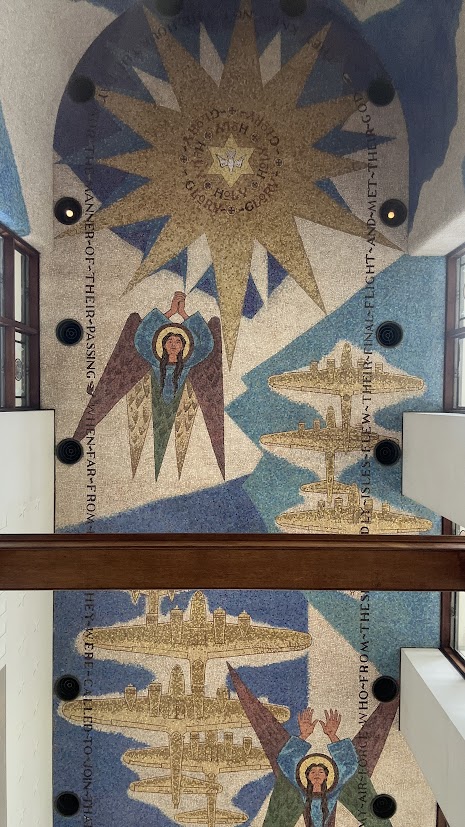
It is a place where history is preserved, not only in stone and marble but in the memories of those who visit.
The ABMC’s meticulous care ensures that the site remains pristine, with every headstone cleaned and every blade of grass trimmed.
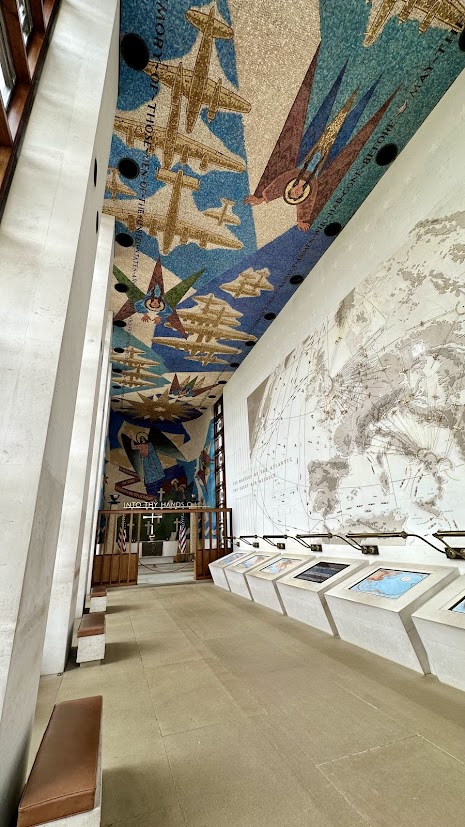
The cemetery’s design and upkeep reflect a commitment to honoring the fallen in perpetuity.
For Americans, the cemetery is a reminder of the global reach of World War II and the sacrifices made far from home.
For Britons, it is a symbol of gratitude for the U.S. contribution to their nation’s survival.
For all visitors, it is a call to remember the cost of freedom and the value of peace.
The Cambridge American Cemetery, with its quiet beauty and profound purpose, ensures that the sacrifices of 3,811 souls—and the thousands more whose names grace the Wall of the Missing—are never forgotten.
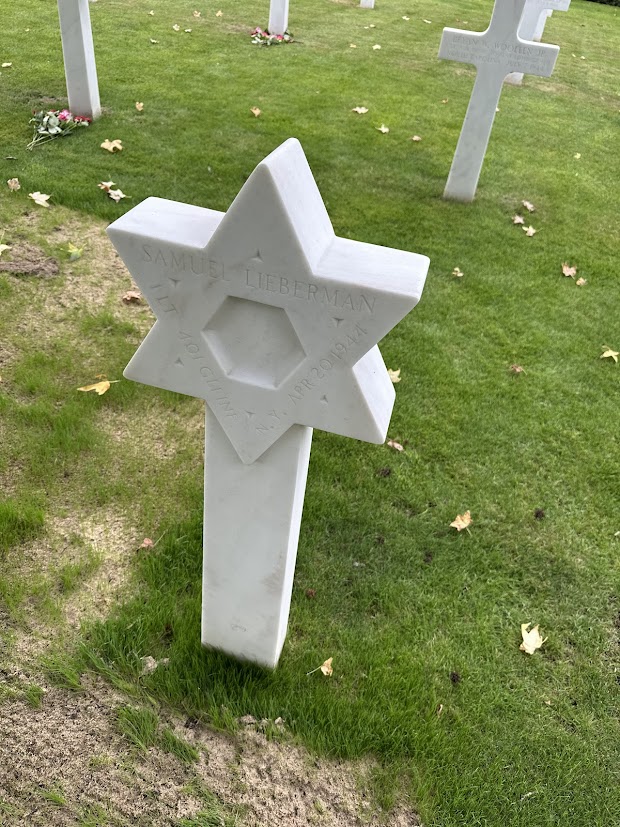
The Cambridge American Cemetery in Madingley, England, feels like a sacred pause in time.
Those 3,811 white marble headstones, curving like waves across the green, hold stories of young Americans—pilots, sailors, gunners—who died in World War II’s brutal air and sea battles.
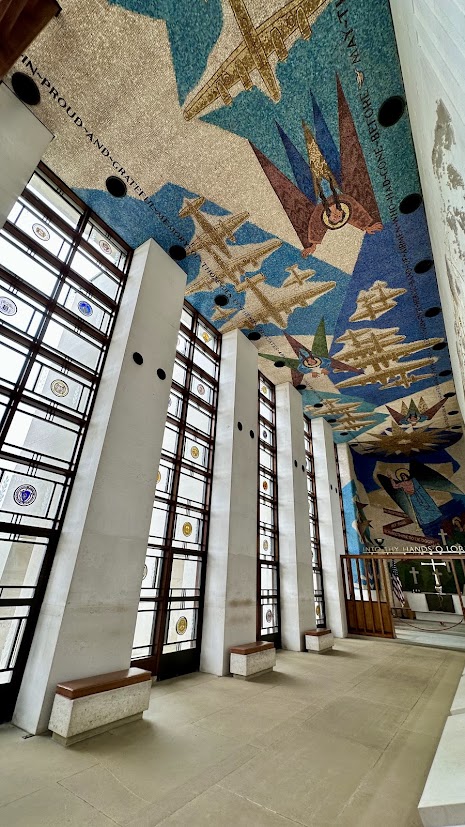
The Wall of the Missing, with 5,127 names, speaks of those lost without a trace, like Joseph P. Kennedy Jr. or Glenn Miller. The chapel’s mosaic of Gabriel’s trumpet and the reflecting pools’ quiet shimmer hit you hard. Gifted by Cambridge University, tended by the ABMC, it’s a place where sacrifice and alliance linger, whispering gratitude and grief.